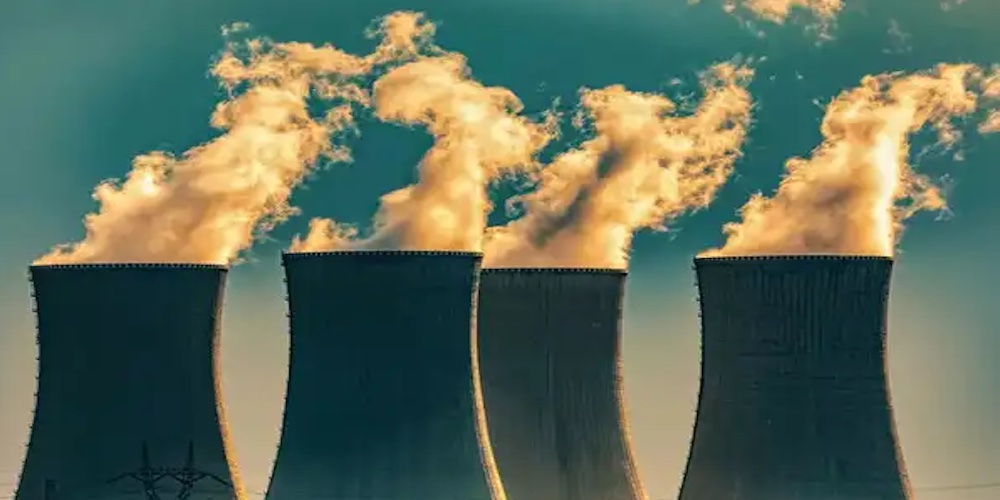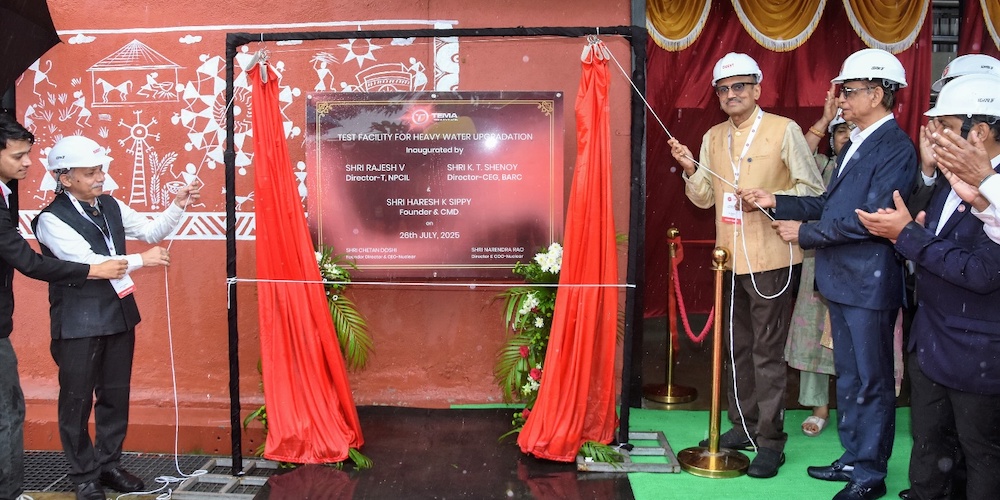Augmenting Nuclear Power

The Government has announced an ambitious Nuclear Energy mission with a target of reaching a nuclear power capacity of 100 GW by 2047. In this regard, the Government has initiated the processes required for enabling large scale participation across the public and private sectors in nuclear power
In a significant advancement for India’s nuclear self-reliance, Director – Technical, NPCIL Rajesh V and Director, Chemical Engineering Group, BARC K. T. Shenoy inaugurated the country’s first-of-its-kind private test facility for the upgradation of depleted heavy water, commissioned by TEMA India Ltd on July 26.
This state-of-the-art facility, designed and built by TEMA India’s nuclear vertical under technology transfer from BARC and a Purchase Order from NPCIL, marks a milestone achievement being realised for the first time in the private sector. The development is said to be firmly aligned with the Prime Minister’s Atma-Nirbhar Bharat initiative.

Until now, critical testing infrastructure for heavy water distillation components existed solely within BARC.
Speaking at the event, Rajesh V and K. T. Shenoy commended TEMA India’s technical acumen, commitment to quality, and its growing role as a trusted partner in India’s nuclear energy programme.
The dignitaries also flagged off the first validated consignment of eight Distillation Column sections, comprising activated phosphor bronze modules, critical components for Pressurized Heavy Water Reactors (PHWRs). These modules, having undergone rigorous in-house performance testing, are slated for deployment in key nuclear power projects: RAPP Unit 8, GHAVP Units 1–4, and KAIGA Units 5 & 6.
This initiative exemplifies the spirit of Atma-Nirbhar Bharat, which calls for greater self-reliance in high-tech, strategic sectors. By designing, manufacturing, and validating nuclear components entirely in-house, India reduces reliance on imported equipment and external test infrastructure. It also helps build domestic capability, confidence, and long-term resilience, empowering Indian firms to contribute meaningfully to national energy security goals.
Incidentally, while answering in Parliament last week, Dr. Jitendra Singh, Union Minister of State (Independent Charge) for Science and Technology, Earth Sciences, MoS PMO, MoS Personnel, Public Grievances & Pensions, Department of Atomic Energy and Department of Space, said that presently nuclear power contributes about 3% to the total electricity generated in the country. In the year 2024-25, nuclear power plants generated 56681 Million Units (MUs) of electricity.
The Government is making efforts to increase the nuclear fuel sources both by augmenting domestic production and imports from diverse sources.
The Government has announced an ambitious Nuclear Energy mission with a target of reaching a nuclear power capacity of 100 GW by 2047. In this regard, the Government has initiated the processes required for enabling large scale participation across the public and private sectors in nuclear power.

The Government has also announced measures for enabling R&D in SMRs and new advanced technologies. The target is planned to be achieved by deploying reactors based on existing and new advanced technologies under development. Presently, the installed nuclear power capacity in the country comprises 24 reactors with a total capacity of 8780 MW (excluding RAPS-1 (100 MW) under extended shutdown).
In addition, a total capacity of 13600 MW (including 500 MW PFBR being implemented by BHAVINI) is under different stages of implementation. On its progressive completion, the installed nuclear power capacity is expected to reach 22380 MW by the year 2031-32.
The specific measures outlined to reach this goal involve a multi-faceted approach, leveraging both indigenous development and international collaboration. Key strategies include the continued deployment of Indigenous Pressurized Heavy Water Reactors (PHWRs), building upon the 24 reactors with 8780 MW capacity. There are also 8 reactors under construction contributing 6600 MW, which include indigenous 700 MW PHWRs like RAPP 8 and GHAVP 1&2, alongside the Indigenous Fast Breeder Reactor (FBR) PFBR, and Light Water Reactors (LWRs) with foreign cooperation such as KKNPP 3&4 and KKNPP 5&6. Furthermore, 10 reactors are at the pre-project activities stage (sanctioned), set to add another 7000 MW, encompassing PHWRs like Kaiga 5&6, GHAVP 3&4, Chutka 1&2, and Mahi Banswara 1&2 and 3&4. With the progressive completion of these projects, the nuclear power capacity in India is projected to reach 22480 MW by 2031-32.
Future plans also emphasize the development of Indigenous Fast Breeder Reactors (FBRs), which align with India’s unique three-stage nuclear power program designed for optimal utilization of its modest uranium and abundant thorium resources through a closed fuel cycle.
Additionally, the strategy includes the deployment of Bharat Small Reactors (BSR) for decarbonisation of hard to abate industries, development of Bharat Small Modular Reactors (SMRs), including indigenous SMRs of varying capacities, and Indian LWRs. Enhanced international cooperation is also envisioned, particularly concerning SMRs and fuel, alongside the export of reactors, services, and supplies.
The government has also launched a Nuclear Energy Mission with an outlay of Rs. 20,000 crore for research and development of Small Modular Reactors (SMRs).


